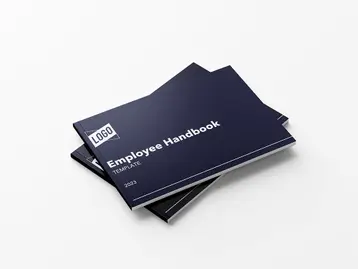
Table of contents
- 1.Types of company culture
- 2.People, perks, and places
- 3.Strong benefits and perks
- 4.Rewards and positive feedback
- 5.Flexible working locations and hours
- 6.Transparent communication and trust
- 7.Making work fun
- 8.10 great company culture examples
- 9.Warby Parker
- 10.Zappos
- 11.Adobe
- 12.REI
- 13.Google
- 14.Airbnb
- 15.Patagonia
- 16.Bain & Company
- 17.Squarespace
- 18.Chevron
- 19.Ready to boost your company's culture?
If someone asked you to define your company culture, how would you respond? Would you hold it up as one of the great company culture examples? Deloitte reports that 88% of employees and 94% of upper management believe that a strong culture is essential to a company’s success. They also report that a well-defined business strategy and core values and beliefs, clearly communicated throughout the company, contribute to positive workplace culture. Unlike a company's values or a company's mission statement, which are normally codified in written documentation, company culture is the day-to-day work environment impacting employee engagement and productivity. Your corporate culture reflects the habits, values, behaviors, and interactions between employees, management, and clients. Company culture naturally affects productivity, recruitment efforts, employee retention, and future success. There are several different types of organizational culture in the corporate world. In this article, we'll describe common types of company cultures and some of the methods the companies employ. Then, we'll look at some great company culture examples that you can use to work on building a healthy culture, all the way from upper management to new hires.
Types of company culture
Looking at the types of company culture below, consider where your business fits. Does it have aspects of more than one?
- Hierarchy culture. Old-school corporate organization where the CEO calls the shots. The chain of command and company policies command respect. Younger workers may consider this a negative culture.
- Team-first culture. Creating the perfect team where everyone works well together is the goal. Managers frequently organize team-building activities.
- Horizontal company culture. The exact opposite of hierarchy culture, horizontal culture puts everyone on the same footing for pitching ideas and pulling the weight of the company equally. Also called “start-up” culture.
- Progressive corporate culture. Companies in the middle of a merger, acquisition, or major market shift find themselves here. Risk and uncertainty require employees to be flexible.
- Elite company culture. These companies hire only the top talent and innovators who can bring big ideas to the table and stay ahead of industry trends.
People, perks, and places
Before we launch into the culture examples, it’s important to understand that your company may be a hybrid of two or more models discussed here. That’s perfectly fine, as long as it includes things that
encourage employees to invest and engage in their work. A people-first approach is usually the best way to go. Some of those key company culture aspects include:
Strong benefits and perks
When employees feel protected and well-served by their benefits package, it gives them peace of mind and an incentive to stay with the company. Added perks can also make employees feel valued. Things like childcare, discounts on skills-building classes, stress-relief perks, local restaurant discounts, and good vacation and personal-time policies help employees achieve that all-important work-life balance. As a result, they feel more engaged and productive while they’re on the clock.
Rewards and positive feedback
To boost morale and productivity across the board, there’s nothing quite like catching someone doing a great job and shouting it out to the company. In fact, Hubspot found that 69% of workers felt spurred on to work harder when the company appreciated and recognized their efforts.
Flexible working locations and hours
Giving employees the option to work remotely, with flexible hours, has been a long-running conversation in HR circles, but the pandemic really put all of the theories to the test. The German Institute of Labor Economics took a closer look at how flexible work arrangements impacted productivity and found strong increases in productivity among workers with more flexible work arrangements. To sustain these benefits, companies must focus on fostering a strong remote work culture that keeps employees engaged, connected, and productive.
Transparent communication and trust
Employees report feeling like they work in a positive company culture and are more engaged in their work when the leadership team communicates frequently, clearly, and openly about the company’s values, status, trajectory, and performance management. They feel especially valued and satisfied
when they see that employee feedback is taken seriously. In fact, when employees talk about poor culture, lack of communication is usually one of the key complaints.
Making work fun
Would you like to enhance creativity, build positive work relationships, and reduce stress at your company? All of those things can improve productivity and problem solving. Try embracing fun lunches, meditation rooms, brighter colors, indoor plants, comfortable work areas, bring-your-dog-to-work days, scavenger hunts, and fun team-building exercises that include even your remote team members.
10 great company culture examples
The following 10 corporations stand apart as company culture examples that you may be able to follow at your own business.
1. Warby Parker
The direct-to-consumer eyeglass maker leans into the team-first culture model. They constantly have a team event on the calendar and schedule random workers to have lunch together so that everyone gets to know everyone else.
2. Zappos
In another team-first model, the shoe company Zappos puts its hiring emphasis on employees who fit their culture first. They have a clear communication model that instills the company’s core values and base promotions on skills and productivity.
3. Adobe
The long-successful software company provides strong perks and benefits that keep employees happy while staying out of the micromanagement game. They believe that trusting employees to solve challenging problems to the best of their ability works.
4. REI
Flirting with the team and elite culture models, the outdoor gear and clothing company hires employees who are all passionate and knowledgeable about the outdoor activities they cater to, so the culture follows naturally.
5. Google
A company as sprawling as Google naturally runs into cultural challenges, but they’ve long been known to provide impressive perks, bonuses, benefits, fitness rooms, pet-friendly workspaces, and team-building parties and trips. They also go along with the elite model by hiring only the top talent.
6. Airbnb
Offices are styled to look like actual vacation destinations, and anyone can use the president’s office, giving the company a horizontal culture feel. Employees tout the work-life balance benefits and fun projects.
7. Patagonia
The company has clear ethical and environmental values and a company policy that has employees embark on outdoor adventures to test its clothing and gear. Patagonia builds a team that is as passionate about their products as they are about the outdoors.
8. Bain & Company
This Boston consultancy company has consistently topped the “best-place-to-work” lists for years because of how people-centric its culture is. Leadership focuses on mentoring talent for the future.
9. Squarespace
This SaaS website building and hosting company has very few levels of hierarchy. SquareSpace tends to a horizontal culture where employees feel their voices matter and they can make a difference in the direction of the company.
10. Chevron
A focus on employee health and safety is what works at Chevron. Instead of focusing on “fun,” they encourage employees to watch out for each other and they provide on-site fitness centers. This creates a culture where employees feel valued.
Ready to boost your company's culture?
Great culture doesn’t just happen. It’s usually the result of the deliberate effort of everyone from top management to the newest employee. TriNet can help HR professionals and business leaders with tools that help them build a great company culture.
This article is for informational purposes only, is not legal, tax or accounting advice, and is not an offer to sell, buy or procure insurance. It may contain links to third-party sites or information for reference only. Inclusion does not imply TriNet’s endorsement of or responsibility for third-party content.

TriNet Team
Table of contents
- 1.Types of company culture
- 2.People, perks, and places
- 3.Strong benefits and perks
- 4.Rewards and positive feedback
- 5.Flexible working locations and hours
- 6.Transparent communication and trust
- 7.Making work fun
- 8.10 great company culture examples
- 9.Warby Parker
- 10.Zappos
- 11.Adobe
- 12.REI
- 13.Google
- 14.Airbnb
- 15.Patagonia
- 16.Bain & Company
- 17.Squarespace
- 18.Chevron
- 19.Ready to boost your company's culture?





